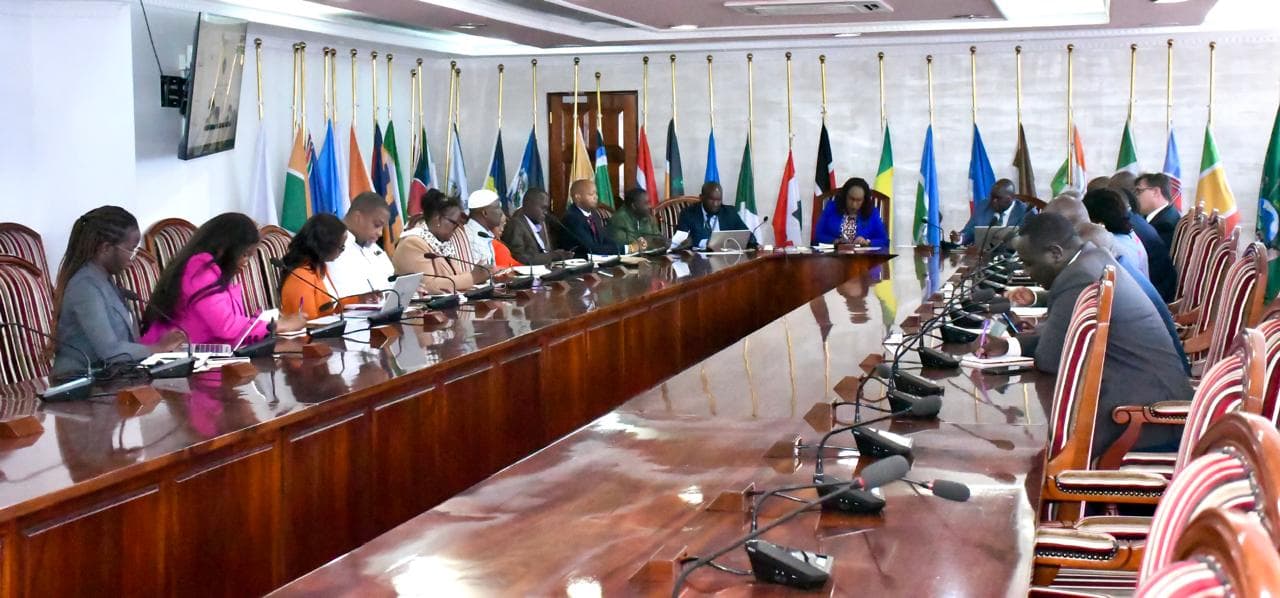Loading News Article...
We're loading the full news article for you. This includes the article content, images, author information, and related articles.
We're loading the full news article for you. This includes the article content, images, author information, and related articles.
A new collaboration between the Kenya Wildlife Service and the Council of Governors aims to breathe new life into 18 national reserves, promising to boost tourism, create employment, and mitigate human-wildlife conflict across several counties.

The Kenya Wildlife Service (KWS) and the Council of Governors (CoG) have launched a joint initiative to revitalise 18 national reserves that have been dormant across the country. This partnership, announced on Wednesday, October 22, 2025, following a meeting between KWS Director General Dr. Erustus Kanga and CoG Chief Executive Officer Mary Mwiti, is expected to unlock significant job opportunities and reignite Kenya's vital wildlife economy.
The core of this initiative is a comprehensive framework designed to ensure the sustainable restoration and management of these reserves. This framework will guide actions at both national and county levels, ensuring each reserve receives the necessary resources to thrive.
Kenya's tourism sector has long been a cornerstone of its economy, contributing significantly to the national Gross Domestic Product (GDP) and providing a crucial source of income for many rural communities. In 2023, the travel and tourism sector contributed KSh 1 trillion to Kenya's economy, supporting 1.55 million jobs. Projections indicate this contribution could reach KSh 1.2 trillion in 2025, supporting 1.7 million jobs.
The KWS, established by the Wildlife Conservation and Management Act of 1989 (now replaced by the 2013 Act), is mandated to conserve and manage national parks, wildlife conservation areas, and sanctuaries. The Council of Governors, on the other hand, provides a platform for governors to address policy and legal issues concerning all 47 counties.
The collaboration underscores a renewed focus on decentralised conservation efforts, with counties playing a more active role in wildlife management. The framework developed under this partnership will establish standardised management protocols and facilitate the training of county rangers. This aims to improve community engagement and enforcement within and around the reserves.
Residents living near these protected areas are anticipated to be major beneficiaries, with the revival of the wildlife economy expected to create jobs such as tour guides and eco-lodge managers. This direct community involvement is crucial for the long-term success of conservation efforts.
The initiative targets 18 dormant national reserves. While the specific list of these 18 reserves was not immediately available, Kenya has over 40 designated national parks and reserves, with KWS managing approximately 8% of the country's total landmass, encompassing 23 National Parks, 28 National Reserves, and 4 National Sanctuaries.
Human-wildlife conflict remains a significant challenge in Kenya, particularly in communities bordering dormant reserves. Between 2017 and 2020, 388 Kenyans were killed and nearly 2,100 were injured by wild animals. More recently, between January and March 2025 alone, KWS reported over 3,800 incidents, resulting in 40 human casualties and 77 critical injuries. The government requires over KSh 1.2 billion to compensate victims of human-wildlife conflict. By reopening and actively managing these reserves, governors hope to reduce such conflicts through improved fencing, increased awareness, and better compensation mechanisms.
Beyond job creation and tourism, the partnership also aims to promote climate resilience. Healthy ecosystems within the revived reserves are expected to act as natural buffers against climate change by regulating rainfall patterns. The success of this initiative hinges on sustained funding, effective implementation of management protocols, and continued community buy-in.
The specific list of the 18 dormant national reserves was not detailed in the announcement. Further information on the allocated budget for this initiative and the timeline for the revival of each reserve is yet to be publicly disclosed.
The collaboration was formally announced on Wednesday, October 22, 2025. The comprehensive framework for sustainable management is now in place to guide national and county-level actions.
Stakeholders will be closely watching for the public release of the detailed list of the 18 national reserves, specific timelines for their revival, and the allocation of resources. The effectiveness of the new framework in reducing human-wildlife conflict and generating tangible economic benefits for local communities will be key indicators of success.
Keep the conversation in one place—threads here stay linked to the story and in the forums.
Other hot threads
E-sports and Gaming Community in Kenya
Active 6 months ago
Popular Recreational Activities Across Counties
Active 6 months ago
The Role of Technology in Modern Agriculture (AgriTech)
Active 6 months ago
Investing in Youth Sports Development Programs
Active 6 months ago